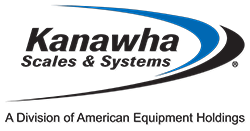AllScan®
The AllScan® analyzer combines state-of-the-art nuclear technology with ground-breaking spectra modelling and powerful statistical analysis. Installed on a conveyor belt, the AllScan® delivers accurate, minute-by-minute elemental analysis and reporting of the chemical composition of bulk materials and key process parameters.
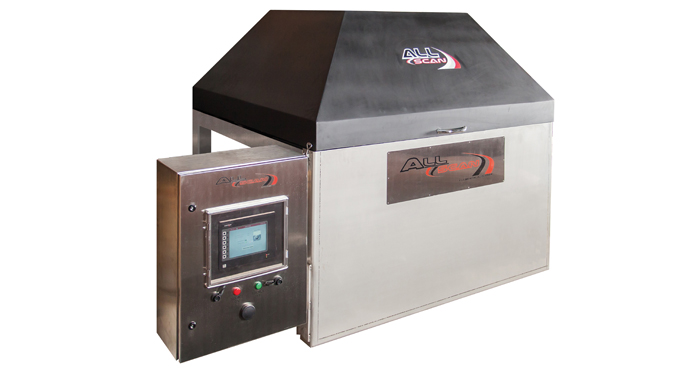
At the heart of the AllScan® is PGNAA – prompt gamma neutron activation analysis. Material on the conveyor is bombarded with neutrons emitted from a radioactive isotope. When neutrons collide with an element in the material, gamma rays are emitted with a specific energy unique to that element – in effect, creating a chemical signature for that element. The greater the amount of an element in the material the greater the number of gamma rays emitted with the corresponding specific energy. By measuring the specific energy of the gamma rays that are emitted and the counts of gamma rays, an accurate analysis of the chemistry of the material is generated on a second by second basis.
RTI has taken this tried and proven technology and made it better – much more accurate, easy to install, calibrate, set up and maintain. AllScan® incorporates a unique analytical calculation concept called Dura-G™.
A well-known challenge with the PGNAA technology is a highly complex raw spectrum comprising of all the individual elemental spectra plus significant “noise/disturbance factors” from sample presentation, material depth variations, hydrogen signal etc. These factors make up the “presentation effects” and can often be stronger than the “composition effects.” Dura-G™ is a unique modelling and calculation concept based on sophisticated algorithms that separate the effect of environment, belt load and profile variations on the measured spectra from the effect of elemental variations.
Thus, by smart removal of “noise components” from the complex raw prompt gamma spectrum, Dura-G™ creates a cleaned-up spectrum, which:
- considers all the spectral components independently and ensures these components are correctly allocated to the separate composition and material presentation effects
- increases the signal to noise ratio of the measured compositional signal and improves the deconvolution of same to provide output data with reduced measurement error compared to the traditional raw spectrum
- supports a sophisticated sample free calibration methodology to provide an elemental analyzer that is not dependent on material or ongoing calibration techniques
The Dura-G™ technology smartly separates the composition and presentation effects, allowing all the spectral components of the complex prompt gamma spectrum to be correctly allocated to composition or presentation effects. In the processing, the significant noise attributable to hydrogen is also eliminated. The illustration below outlines how the unique AllScan® concept differs from the conventional calculation concept used by other players in the market.
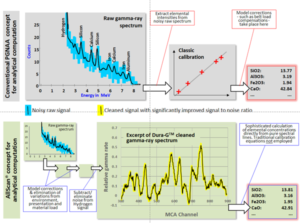
AllScan® also includes a powerful algorithm – DuraSum™ – that eliminates the need for time-based averaging of data to obtain stable results. This means that changes in elemental composition of the material are reported almost instantaneously, rather than many minutes later. This in turn allows for rapid operational control.
Industry Application
The AllScan® is used in many industries including:
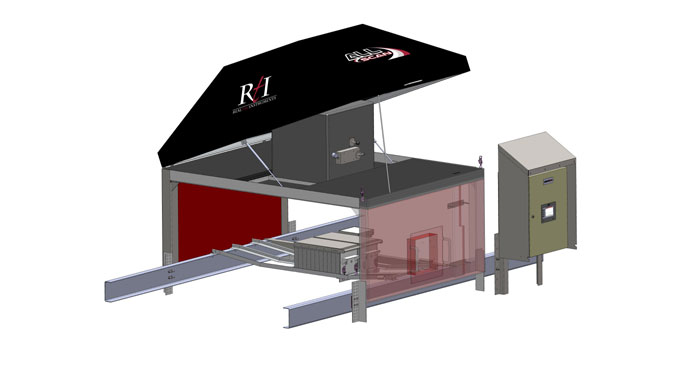
The AllScan® online elemental analyzer arrives fully factory calibrated. It normally takes less than a day to mount to the conveyor stringers and connect to the plant DCS. In less than two days, accurate verifiable results are available as discrete digital signals for automated control of equipment and manual decision making. It can be custom configured to measure the elements in the periodic table of relevance to the user. Typical elements measured include:
- Iron (Fe)
- Aluminium (Al)
- Silicon (Si)
- Potassium (K)
- Sulfur (S)
- Calcium (Ca)
- Magnesium (Mg)
AllScan® also provides real time proximate and ultimate analysis including:
- Carbon
- Hydrogen
- Nitrogen
- Oxygen
- Sulfur
- Ash
- Volatile fixed carbon
- Calorific value
Additionally, trace elements such as mercury, arsenic, and selenium can be measured with definitive accuracy.
AllScan® Coal
The AllScan®provides real time analysis of elemental composition that is used to improve monitoring, sorting and blending operations in coal fired power stations. AllScan® is used for the applications of raw coal, plant feed, clean coal and blended coal. AllScan® is the most affordable, accurate and easy-to-install cross belt analyzer of its kind in the world today. AllScan® has two key advantages over other analyzers:
- A much higher tolerance to changing coal types (e.g. from different seams), eliminating the need for multiple calibrations
- It provides much more information than just ash, as it directly measures individual elements like Fe, Al, Si, K, S, Ti, Ca and other elements. The AllScan® has proved results for measurement of trace elements such as P, Hg, As and Se. The AllScan® also directly measures moisture.
Combining state-of-the-art nuclear technology (PGNAA) with ground spectral modelling (sophisticated algorithm DURA-G™ incorporated to reduce dramatically measurement error), the AllScan® delivers accurate, minute by minute elemental analysis and reporting of key process parameters.
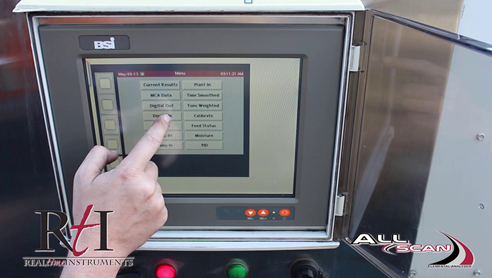
AllScan® Coal PGNAA HMI
The Benefits of AllScan’s® design are many, and include:
- online, real-time results
- higher performance
- full elemental plus moisture analysis
- easy to install
- safe
- low running costs
- rugged and reliable
- no air conditioner requirement
- flexible input / output data
- remote access as standard
- global reach, global expertise and global product support
AllScan® Cement
Accurate real-time data on the composition of raw material feed streams before stockpiles or raw mills increases product quality and contributes significantly to reduced production costs. Since its market introduction in the 1980s PGNA analysis was widely acknowledged as the far superior online analysis technology for cement process quality optimization. Documented by close to a thousand installations, the documented analytical performance coupled with the very fast control response means that PGNAA has grown to become the leading online quality control concept in the cement industry. Today, almost every new green field cement project layout includes one or more PGNA analyzers.
Other online analysis technologies applied in cement, such as IR/NIR/-FTIR and XRF/EDXRF analyzes the material/sample surface only, while the penetrating concept of PGNAA measures the entire product stream. RTI’s AllScan® analyzer has been developed to address practical analytical challenges experienced with less advanced analyzers. Best in class robustness of the applied calibration model as well as high tolerance towards material depth variations and effects from layering on the belt conveyor through the analyzer are some of the most notable benefits of AllScan®. Very low installation costs and moisture analysis capability always included with no added costs makes the total cost of ownership (TCO) for a typical cement installation the lowest on the market.
The AllScan® Online Cement PGNA Analyzer measures and reports analytical data of relevance for cement production, such as: SiO2, Al2O3, Fe2O3, CaO, MgO, Na2O, K2O, S etc. Moisture as well as customer-defined derived cement chemistry modules like LSF, KH, SIM, ALM etc. Accessible from the touch screen integrated in the control cabinet or utilizing various available interface options, the AllCement user interface software presents:
- Configuration data
- Status information
- Last 1-min analysis values
- Tonnage weighted rolling averages
- Configurable trends
- Current accumulated pile
- Previous accumulated pile
- Data from selected piles

The use of AllScan® in quarry and stockpile management applications at cement plants facilitates significant improvements in pre-blending performance through:
- optimized utilization of quarry materials
- homogenized building of the stockpiles to desired target chemistry with minimum variations
In the cement stockpile application, AllScan® is typically installed on a conveyor section between crusher(s) and stockpile(s). The AllScan® continuously reports the elemental composition of the conveyed material. The data obtained is used to keep track of the pile build-up and may, optionally via 3rd party optimizing software, be used to direct haul trucks to different sections of the quarry to best exploit the quarry over time as well as to optimize use of the quarry equipment.
Another important cement plant application for AllScan® is to provide fast online analytical data for a raw mill quality control application. Here the analyzer is placed on a conveyor belt section downstream of the feeders and upstream of the raw mill. The online analytical data by AllScan® is the essential basis for 3rd party software QC optimizing schemes, which applied for:
- green field projects facilitate smaller and therefore less expensive homogenizing silo systems
- existing plants may be the “repair tool” for poor functioning silo systems
Both case examples mean significantly reduced variability in the raw mix product from the mill, and ultimately the kiln feed. Consistent kiln feed chemistry in turn leads to better quality clinker, lower fuel consumption per ton of clinker produced, reduced refractory costs etc.
A less frequently applied application; however, increasingly demanded from the market is to install a PGNA analyzer to monitor the delivery of coal/lignite to cement plants. With poor quality lignite or varying coal qualities from a range of different suppliers the installation of AllScan® may provide significant quality improvements by close monitoring of the ash contents and percentage of the incoming coal/lignite.
AllScan® offers easy connectivity to cement plant control systems:
- Application data from the AllScan® are seamlessly transferred to the plant control system and is typically interfaced to 3rd party cement QC software to optimize quarry operations, stockpiling, and raw mix proportioning.
- AllScan® interfaces by means of applicable electrical standards and communication protocols with well-known DCS & PLC type plant control systems as well as QC optimization software from leading suppliers of cement specific quality control software.
AllScan® Minerals
The AllScan® CrossBelt PGNA Analyzer for Minerals continuously measures the concentration of individual chemical elements of interest in mineral ores, ore mixes, sinters and concentrates.
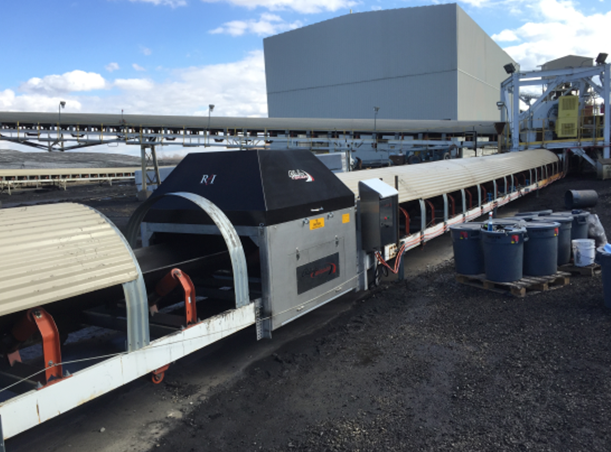
AllScan® is used in a wide range of minerals applications including:
- Monitoring of ROM streams including screening
- Stockyard QC management, including sorting and blending
- Optimizing at key quality locations in minerals processing plants
- Quality control in metals production, for example blast furnace sinter process
- Product grading at bulk terminals and ship load outs
Typical elements measured include:
- Silver (Ag)
- Aluminum (Ag)
- Gold(Au)
- Calcium(Ca)
- Cadmium (Cd)
- Chlorine(Cl)
- Cobolt(Co)
- Chromium(Cr)
- Copper (Cu)
- Iron (Fe)
- Potassium (K)
- Magnesium (Mn)
- Sodium (Na)
- Nickel (Ni)
- Phosperous (P)
- Sulphur (S)
- Silicon (Si)
- Titanium (Ti)
- Vanadium (V)
- Zinc (Z)
ByLine Analyzer
The AllScan® Byline PGNA Analyzer is an alternative option to the standard through-belt PGNAA Analyzer located on the main belt. The byline option is chosen when, for practical reasons, an analyzer cannot be located on the main belt.
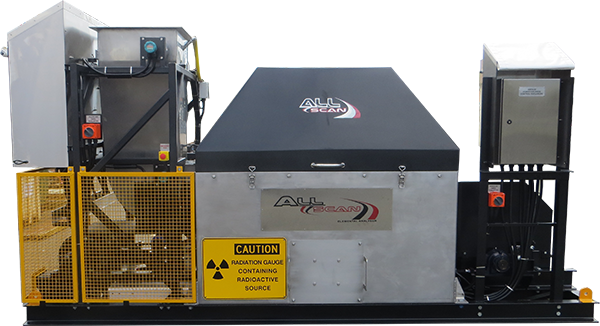
The AllScan® Byline Analyzer is normally custom built according to the client’s specifications. It typically is supplied with a hopper feeding onto a variable speed drive (VSD) conveyor belt which feeds sample material, which is choke-fed, from a primary sampler.
